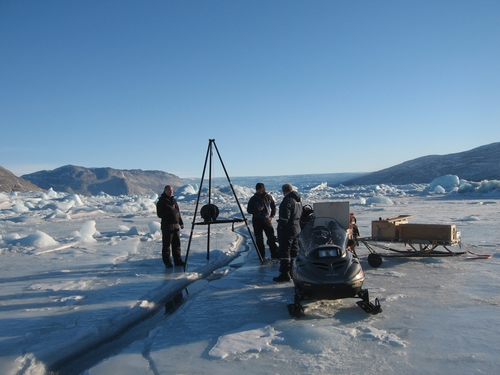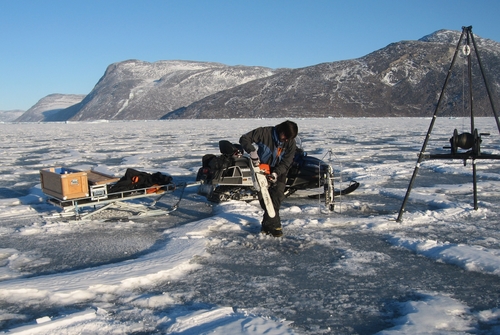New knowledge of sea-fjord-ice interaction Published 03.02.2011

New research in Godthåbsfjord has revealed an important local heat source in the fjord that can be associated with increased mass loss from tidal glaciers in contact with the Greenland Ice Sheet. Previously, increased focus has been directed to the external energy input from the global circulation through the West Greenland Current where warm water from the sea passes through the fjord to the glaciers.
Based on monthly monitoring data and regular seasonal datasets in Godthåbsfjord, the Greenland Climate Research Centre has revealed a previously unknown circulation pattern driven by tides, which can be related to this local energy source. In short, water in the inner parts of the fjord is heated by the sun during summer and despite the fact this warm surface water flows toward the sea it is mixed down by the strong tides in the mouth of the fjord and returned to the inner parts of the fjord again where it potentially can melt even more glacial ice. How many times this cycle is repeated is not yet known.
This and other interesting hydrographic themes are described in a recent article published by the American Geophysical Union, Journal of Geophysical Research – Ocean: Mortensen, J., K. Lennert, J. Bendtsen, and S. Rysgaard (2011), Heat sources for glacial melt in a sub-Arctic fjord (Godthåbsfjord) in contact with the Greenland Ice Sheet, J. Geophys. Res., 116, C01013, doi:10.1029/2010JC006528.
The article is the result of research focused on sea, fjord and ice interactions and supported by the Commission for Scientific Research in Greenland (KVUG), Ministry of Climate and Energy, the Ministry of Science, Technology and Innovation and by the Aage V. Jensen Charity Foundation.

Fieldwork on the fjord ice. Photo: GCRC

